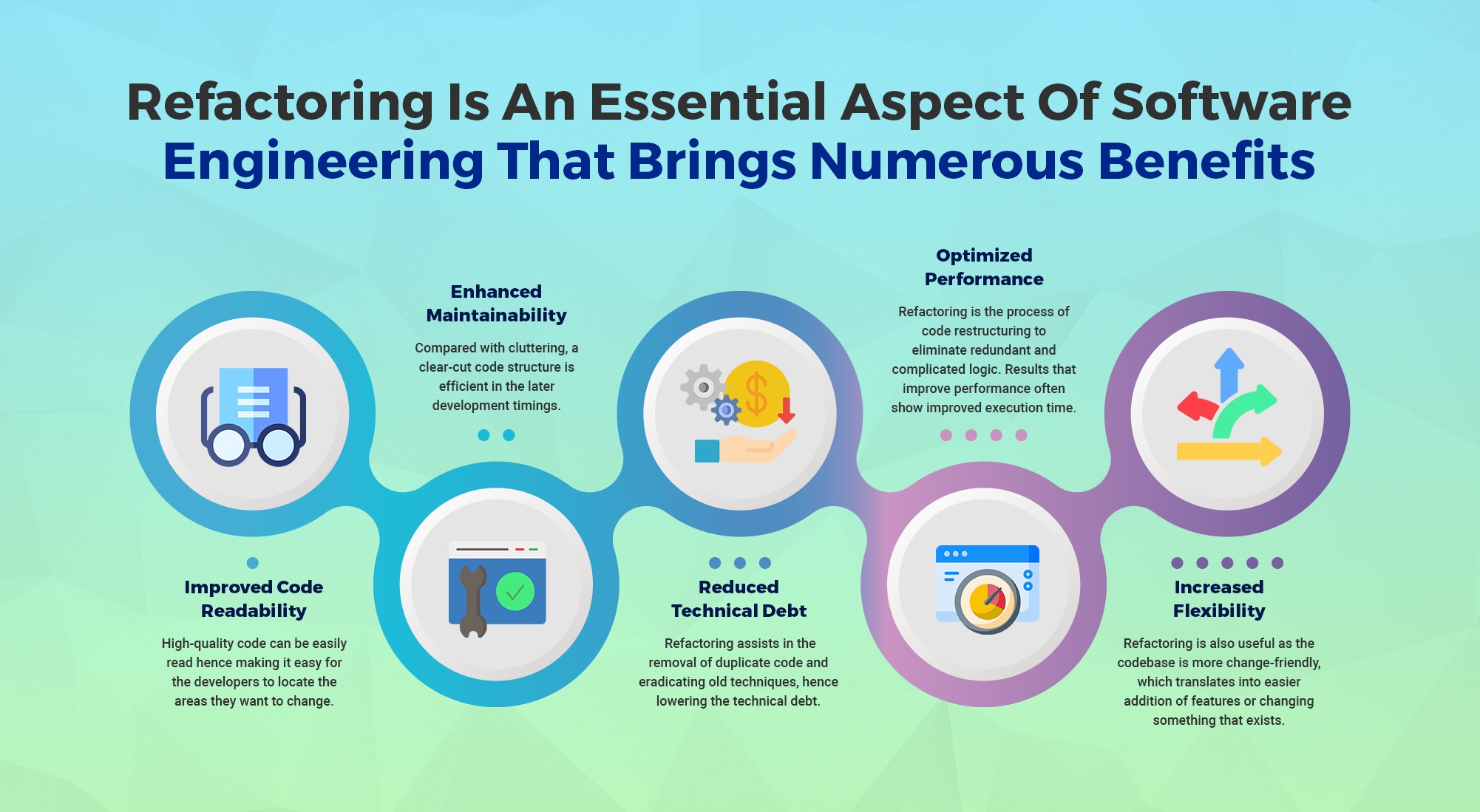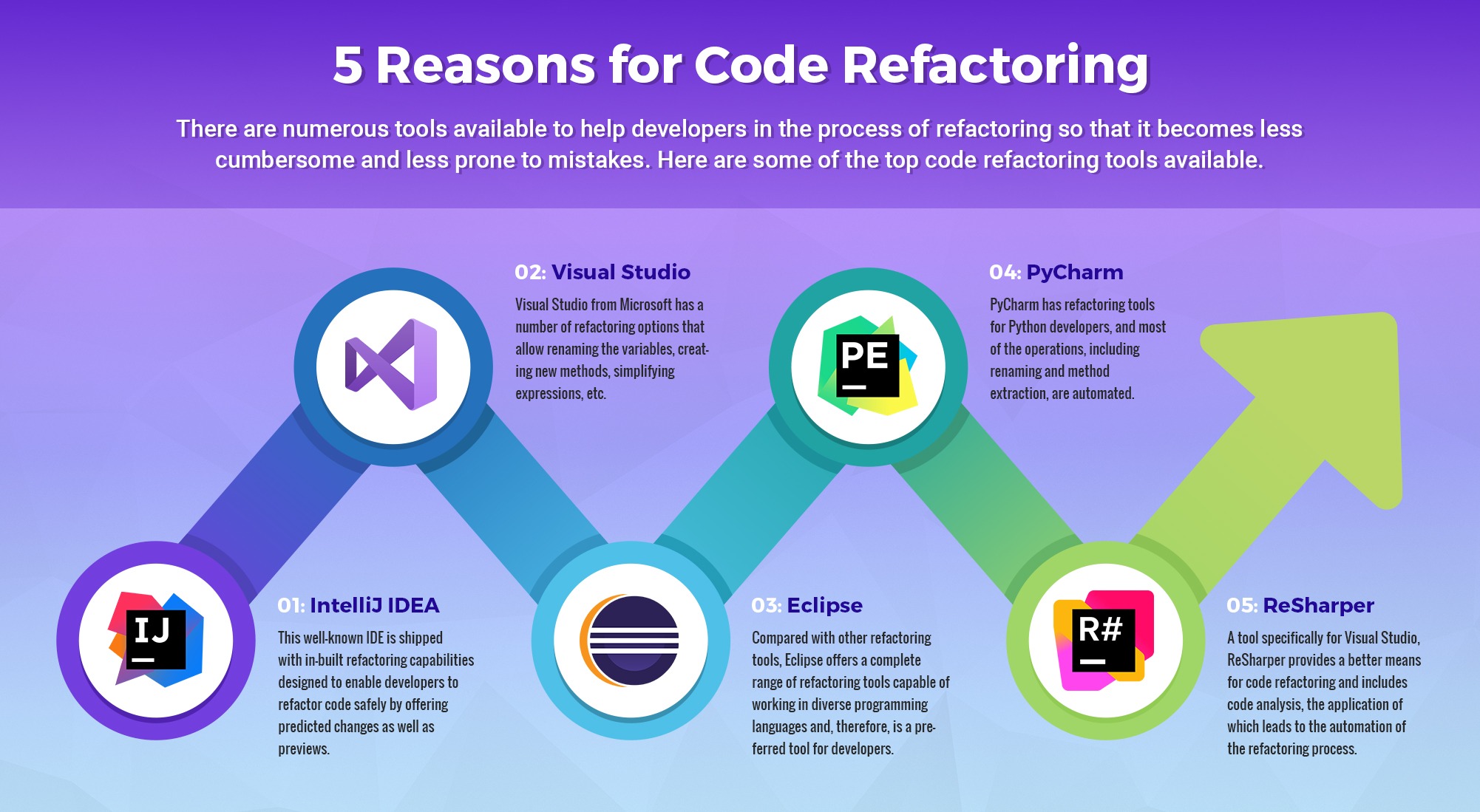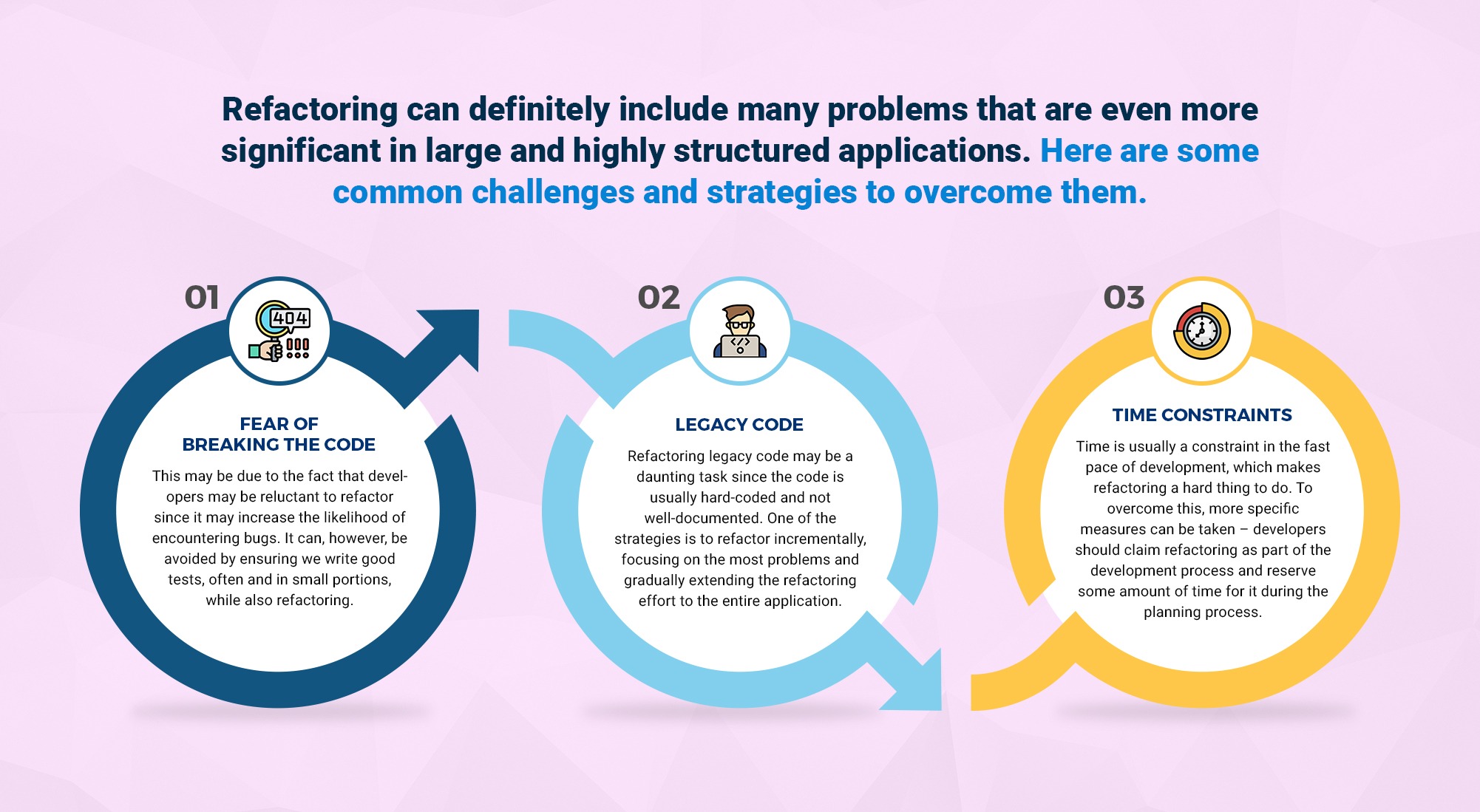When it comes to software development, code refactoring is one of the most essential procedures that aim to preserve the code’s health in the future. Many people consider refactoring as an activity that does not take more than an hour to accomplish.
On the other hand, refactoring is a process that does not even lie in simple corrections; it is all about altering the structure and design of code to enhance development strategies and flexibility. It is quite common for a software project to accumulate a tangled and overly large source code as it progresses.
In the article, we are going to discuss the details of code refactoring and how it is crucial in contemporary software development. From the identified sources, we shall find out the different strategies employed by developers in improving code quality and discover other useful tools and technologies crucial in the re-factoring process while pointing out the best strategies to ensure that re-factoring is both meaningful and sustainable.
What is Code Refactoring? Understanding Its Meaning and Importance
Code refactoring is basically the act of restructuring the code while ensuring that what it does does not change. The main goal of refactoring is to enhance the internal quality of the code and get a more quick, non-complex, and modifiable result.
One of them is refactoring, in which there is an elimination of technical debts, improvement of code readability, and making the codebase ready for the inclusion of new features.
When people talk about refactoring, they don’t mean adding new functionality or fixing issues with the code; they are improving the existing code.
This practice is vital, especially in custom software development services, where the quality of the code base is indicative of the quality of the services that the software will render.
Why is Refactoring Important in Software Engineering?

Refactoring is an essential aspect of software engineering that brings numerous benefits:
- Improved Code Readability: High-quality code can be easily read hence making it easy for the developers to locate the areas they want to change.
- Enhanced Maintainability: Compared with cluttering, a clear-cut code structure is efficient in the later development timings.
- Reduced Technical Debt: Refactoring assists in the removal of duplicate code and eradicating old techniques, hence lowering the technical debt.
- Optimized Performance: Refactoring is the process of code restructuring to eliminate redundant and complicated logic. Results that improve performance often show improved execution time.
- Increased Flexibility: Refactoring is also useful as the codebase is more change-friendly, which translates into easier addition of features or changing something that exists.
All are the main reasons why refactoring can play an essential role in this hurdle. AppVerticals provides refactoring services, and our team of coders can help optimize your code. It is now time to call us and turn your development business for change and betterment,
Code Refactoring Techniques: The Essentials
Developers employ several techniques that makeup refactoring, including the following: Here are some of the most common and effective refactoring methods.
- Extract Method: This technique entails the division of a single voluminous method into compact methods. Every new method has its means for better readability and reusability of code than the previous one.
- Rename Variables: Proper and meaningful variable names give more clarity to the code developed. This technique can be done by changing the identifier added to variables, functions, or classes with a new one that is more suggestive.
- Simplify Conditional Expressions: Adding a large number of conditions can lead to complexity issues in the code, and the ease of following and debugging the program might be quite difficult. The expressions can be altered for better clarity using guard expressions and ternary operators, and the expressions may be moved to other methods.
- Remove Dead Code: The excess code that is written does not have any use or is out of date, interfering with the readability. Eliminating dead code is one of the simplest yet effective refactoring approaches that should be implemented.
- Consolidate Duplicate Code: It is an undesirable situation because duplicated code leads to differences and, as a result, makes the code even more complex to maintain. The principle to avoid code duplication implies that any duplicated logic should be collapsed into a single method or a class and is aimed at improving code readability and maintainance.
Code Refactoring Tools: Enhancing Developer Efficiency

There are numerous tools available to help developers in the process of refactoring so that it becomes less cumbersome and less prone to mistakes. Here are some of the top code refactoring tools available.
- IntelliJ IDEA: This well-known IDE is shipped with in-built refactoring capabilities designed to enable developers to refactor code safely by offering predicted changes as well as previews.
- Visual Studio: Visual Studio from Microsoft has a number of refactoring options that allow renaming the variables, creating new methods, simplifying expressions, etc.
- Eclipse: Compared with other refactoring tools, Eclipse offers a complete range of refactoring tools capable of working in diverse programming languages and, therefore, is a preferred tool for developers.
- PyCharm: PyCharm has refactoring tools for Python developers, and most of the operations, including renaming and method extraction, are automated.
- ReSharper: A tool specifically for Visual Studio, ReSharper provides a better means for code refactoring and includes code analysis, the application of which leads to the automation of the refactoring process.
Are you willing to increase the productivity of your software?
AppVerticals provides refactoring services, and our team of coders can help optimize your code.
Yes Let’s goBest Practices for Effective Code Refactoring
Refactoring is a thoughtful and planned affair. Here are some best practices to follow when refactoring code.
- Refactor Regularly: Refactoring should be made a routine practice to ensure that the code one is developing remains as clean as possible in the future as well.
- Test Frequently: In other words, after each refactoring step, it is imperative that tests are run to check whether the external interface of the code has been modified in any way.
- Refactor in Small Steps: It is also important to avoid overloading the change by trying to address all of the issues at once. However, refactoring small parts using a gradual approach is necessary to prevent the introduction of new errors.
- Keep Commit Messages Descriptive: When committing refactored code, choose a meaningful message so that every change in code can be clearly identified.
- Focus on High-Impact Areas: To decide where to apply refactoring, first of all, the parts of the code that have been changed most often should be chosen, as well as the parts that are critical in terms of performance.
Code Refactoring Examples: Real-World Scenarios
To better understand the impact of refactoring, let’s explore a few real-world examples:
- Extract Method Example: Suppose there is an algorithm that handles a user’s order, and it involves several steps like order validation, the computation of the total, and inventory update. By extracting each of these steps into its method, the code becomes more manageable and easy to test.
- Simplify Conditional Expressions Example: Let’s assume a conditional statement that utilizes the else-if ladder that checks for various conditions before executing a piece of code. It is easy to read and understand and easier to make modifications by dividing the conditions into methods with informative names.
- Consolidate Duplicate Code Example: Imagine there is a block of code that computes the overall price of items and is located in different modules of the application. This is helpful because by creating this one method, you cut down on duplication and make the code easier to manage.
Above are real-world examples of why refactoring can play an essential role in this hurdle. AppVerticals provides refactoring services, and our team of coders can help optimize your code. It is now time to call us and turn your development business for change and betterment,
Common Challenges in Code Refactoring and How to Overcome Them

Refactoring can definitely include many problems that are even more significant in large and highly structured applications. Here are some common challenges and strategies to overcome them.
- Fear of Breaking the Code: This may be due to the fact that developers may be reluctant to refactor since it may increase the likelihood of encountering bugs. It can, however, be avoided by ensuring we write good tests, often and in small portions, while also refactoring.
- Legacy Code: Refactoring legacy code may be a daunting task since the code is usually hard-coded and not well-documented. One of the strategies is to refactor incrementally, focusing on the most problems and gradually extending the refactoring effort to the entire application.
- Time Constraints: Time is usually a constraint in the fast pace of development, which makes refactoring a hard thing to do. To overcome this, more specific measures can be taken – developers should claim refactoring as part of the development process and reserve some amount of time for it during the planning process.
When to Refactor: Identifying the Right Time
It is similar to refactoring; one has to understand when to refactor as much as one understands how to refactor. Here are some scenarios where refactoring is most beneficial
- Before Adding New Features: Changing the code that has already been put in can actually help add some new features since the code complexity is cut down.
- During Code Reviews: Another way when it is possible to notice such places is during code review before production; it is quite good to make such estimations. The developers can come together to enhance the quality of the written code.
- When Fixing Bugs: Refactoring during bug fixes can also act as a way of addressing the same problem somewhere else since it will give developers cleaner and more accurate code to work with.
- When Performance Issues Arise: If the application runs into a performance problem, performance enhancement can further come into the picture by refactoring the most essential parts of the application so that the application can perform better.
Navigating Common Refactoring Pitfalls: What to Avoid
Refactoring is a very efficient method, but one must acknowledge the fact that difficulties are always associated with it. Certain principles and guidelines must be taken into consideration and followed, which is why by knowing the weaker points and possible mistakes, the work seems more successful and efficient. In this section, typical errors that developers make while performing the refactoring phase will be discussed, and possible approaches to avoid these errors will be provided to guarantee that such changes in the code are positive and profitable.
1. Over-Refactoring
One of the most common mistakes is over-refactoring, when developers split code too much or add unnecessary levels of abstractions, which can confuse rather than help during development. Although the purpose is to make the code neat and easy to maintain, there are situations when one really over-complicates the code and makes it unreadable.
To avoid this, one should concentrate his efforts on updating areas that really require optimization and make sure that every change is worthwhile.
2. Ignoring Existing Tests
Refactoring can reveal poor system quality and deficiencies, especially if refactoring was done without running all existing tests or if there were very few or none at all. When using refactoring, it is important to conduct tests so as to ensure one is not changing any external functionality of the code.
Before you start refactoring your code, you should make certain that there are good unit tests as well as integration tests in place. These are the tests that should be executed after the changes have been made to ensure compliance with the previous requirements.
3. Lack of Clear Goals
In refactoring, it is important not to set an objective because it will only lead to refactoring without direction, hence leading to a scattered approach to refactoring where different aspects are changed without being informed by a specific plan. The tasks may need clearer direction, which may eventually cause poor improvement in codes and loss of opportunities to optimize the codes.
It is good to identify and state why you are going to refactor your code. Be specific. You want better readability, simplicity, performance, etc., and then keep these goals in mind while refactoring.
4. Failing to Communicate Changes
When working in an environment where various developers contribute to a project, changes made to the refactoring documentation should be communicated to the rest of the team so as to avoid conflicts and misunderstandings. It should also be pointed out that any changes made should be documented properly, and the occurrence of the change should be communicated to the members of the team.
This involves the augmentation of code docs, commit log messages, and briefs on large-scale refactorings to the rest of the team to ensure that they are in tune with changes made to code.
Are you willing to increase the productivity of your software?
AppVerticals provides refactoring services, and our team of coders can help optimize your code.
Yes Let’s goConclusion: Embracing Code Refactoring for Long-Term Success
Adaptive coding is not just a technique to be followed but is the most important principle of software development. With a practice known as refactoring that involves restructuring the code on a repeated basis, developers can prevent their platforms from decaying in terms of quality while at the same time rendering them fit to accommodate new changes. For the young developer, this paper has underlined the importance of mastering the art of refactoring to improve the quality of the software that’s being delivered.
Use these techniques, tools, and practices in your development cycle and observe how your codebase turns into a finely tuned and optimized development environment capable of handling even the most demanding future tasks that you could ever imagine.








